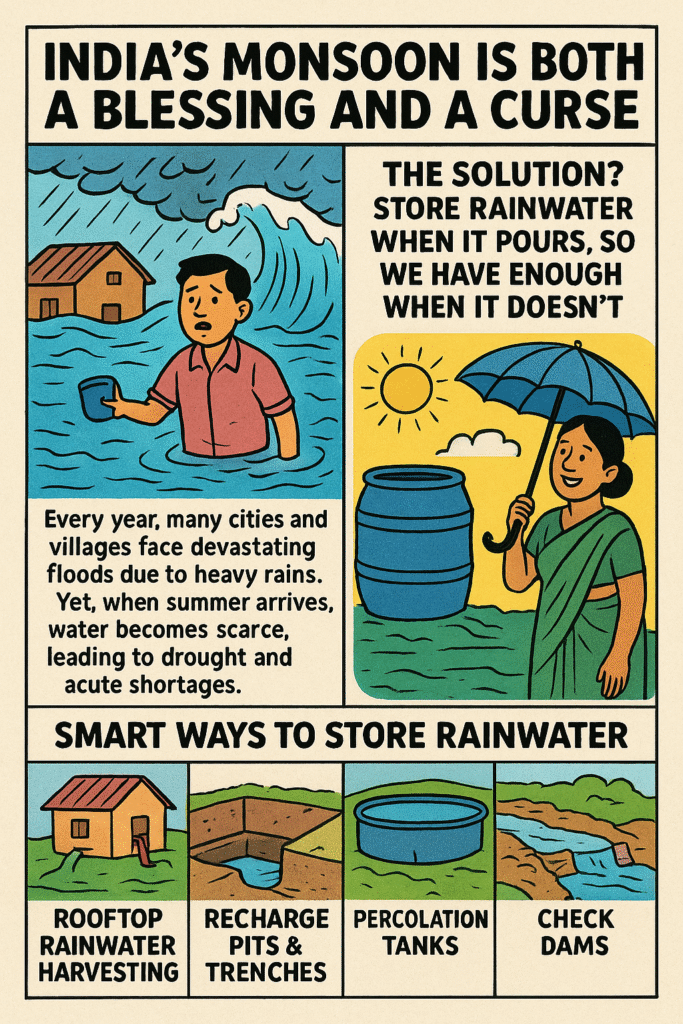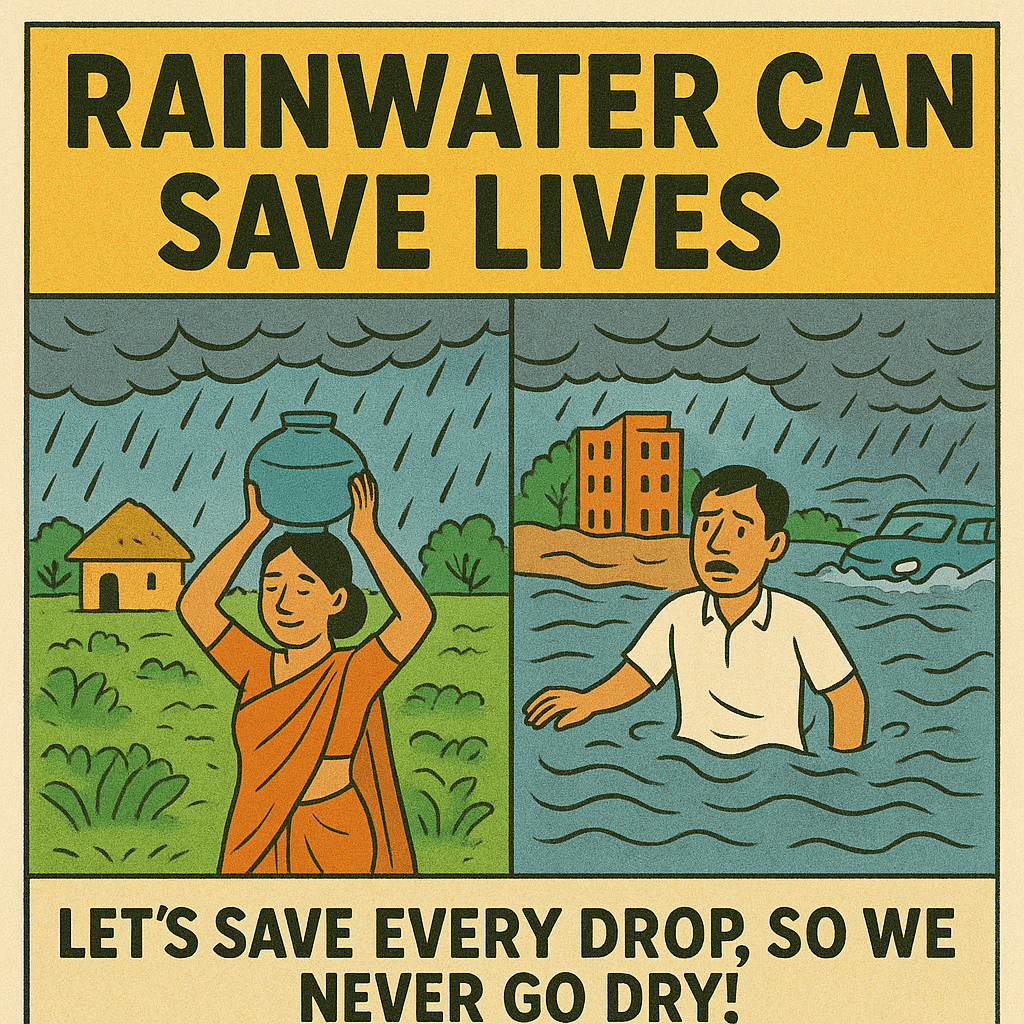India’s monsoon is both a blessing and a curse. Every year, many cities and villages face devastating floods due to heavy rain fall—yet, when summer arrives, water becomes scarce, leading to drought and acute shortages. The solution? Storing rainwater when it pours, so we have enough when it doesn’t.
Why Does Flooding Happen?
During the monsoon, intense rainfall overwhelms drainage systems and washes over concrete surfaces, leading to flash floods. Most rainwater simply runs off into rivers and eventually reaches the sea, wasted. This vicious cycle can be broken by efficient rainwater management and harvesting systems.
Smart Ways to Store Rainwater
Here are proven, sustainable ways to capture rainwater and use it during dry spells:
1. Rooftop Rainwater Harvesting
- How it works: Rainwater falling on roofs is collected via gutters, filtered, and directed into storage tanks or recharge pits.
- Real-life example: Chennai made rooftop rainwater harvesting mandatory in 2001, raising groundwater levels and reducing dependence on distant water sources.
2. Recharge Pits & Trenches
- How they work: Dug-out pits filled with gravel/sand allow rainwater to percolate underground, replenishing aquifers.
- Case study: In Rajasthan, traditional “johads,” or small earthen dams, have transformed arid regions into fertile lands by recharging groundwater.
3. Percolation Tanks
- How they work: Large, shallow reservoirs catch and store rainwater, allowing slow seepage into the ground.
- Where used: Drought-prone regions in Maharashtra, such as Ahmednagar, use percolation tanks to improve groundwater and support farming.
4. Check Dams
- How they work: Small barriers built across streams slow down water flow, helping recharge underground aquifers.
- Impact: Gujarat’s check dams have improved water availability in rural villages.
5. Rain Barrels & Storage Containers
- How it works: Simple barrels or tanks collect rainwater directly from gutters, providing clean water for non-drinking uses during dry months.
6. Community Water Sharing
- Success story: Villages in Andhra Pradesh linked borewells via underground pipelines, pooling groundwater and sharing it during drought.

Key Benefits of Rain water Storage
- Flood prevention: Slows down runoff and reduces city flooding.
- Groundwater recharge: Restores depleted aquifers, improving water availability in wells and hand pumps.
- Drought resilience: Stored rainwater is available year-round for farming, drinking, and household use.
- Lower water bills: Reduces the need for expensive, piped water.
- Clean water: Filtered rainwater is suitable for many household purposes.
- Environmental benefits: Minimizes soil erosion, improves greenery, and restores natural springs.
Practical Steps You Can Take
- Install rooftop rain water harvesting systems using proper filters and tanks.
- Build recharge pits or trenches in community areas, parks, and playgrounds.
- Use rain barrels for gardens, cleaning, and other non-potable needs.
- Encourage local governments to revive traditional water storage structures like stepwells and johads.
- Spread awareness—community efforts multiply the impact!
Final Thoughts
India’s water crisis is man-made but also solvable. By capturing the floods through rainwater harvesting, groundwater recharge, community sharing, and traditional methods, we can turn excess rain into a lifesaver during droughts. It’s not just smart—it’s essential for our future.
Let’s save every drop, so we never go dry!


